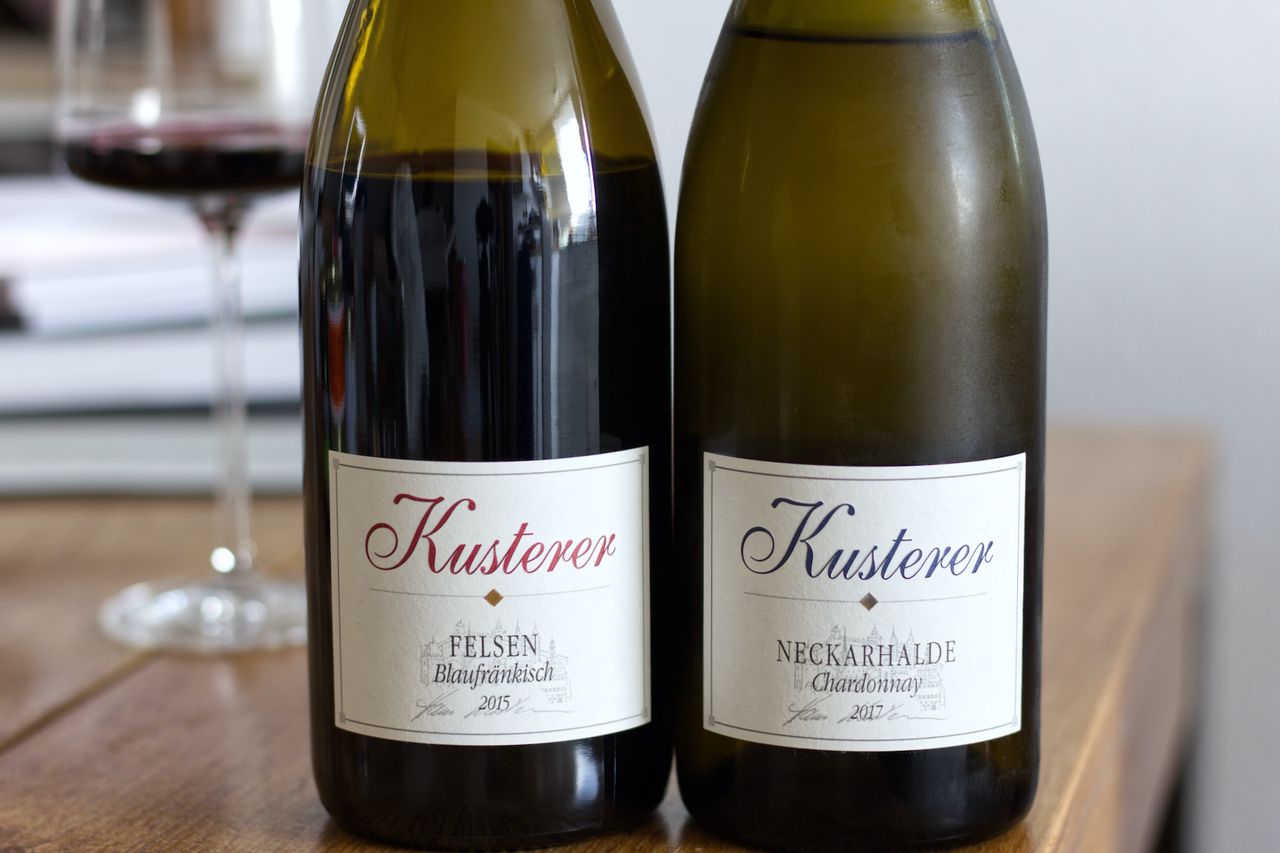Two Bottles Kusterer
We drink a Chardonnay Neckarhalde from 2017 and a Blaufränkisch Felsen from 2015 from the Kusterer winery in Esslingen.

We drink regional again. In the middle of the vineyards of Esslingen, the Kusterer winery has built its gravitational winery building. When you stand directly in front of it, the dimensions are impressive and for the future we definitely plan to take a guided tour through the building. During this purchase we only saw the sales room from the inside. But never mind, afterwards you can take a walk through the vineyards and have a great view of Esslingen from the steep terraces where the Blaufränkisch comes from. The Blaufränkisch is from 2015, matured in new wood and grown in the vineyard by pure manual labour. Nothing else is possible in the small terraces. The winery’s wine press building extends over four floors and is constructed in such a way that the wines can be drawn off without pumping only by gravity to a lower floor. Kusterer uses the natural sedimentation of the sediments to remove turbidity and filtration is often not necessary. In addition, the winery also owns the Neckarhalde vineyard, which is the smallest single vineyard in Württemberg with less than one hectare. This is where the Chardonnay from 2017 comes from.
We are also starting with the Chardonnay. Immediately after unscrewing, a creamy wood spice reaches out to you, mixed with a little wet stone. In the mouth there is much less of the wood left than the fragrance would suggest. Here it reveals itself as a beautiful spice that gives structure. There is also a bit of fruit in the back, but you have to search a bit after opening. In the end, a slight bitter note remains. The wine appears very young.
A few hours later and alongside gnocchi in sage butter it starts to take off. The combination with food really brings out the fruit, which was previously so reserved. Exotic, melon, lots of badly cleaned pineapple, which still has a few woody parts, minerality and a nice acidity. This fits perfectly.
After a night in the fridge, herbs are added, the pineapple becomes even more intense, vanilla, gooseberry on the palate and a little cassis paired with spice on the back. I like it very much.
The Blaufränkisch starts with lots of fruit. Cherry, a bit sweet in the nose, with wood. Then we smell very ripe blueberries and smoke. The fruit also plays on the main stage in the taste, you can also feel the wood and after the first sips you can smell marzipan and forest soil mixed with some menthol. After a few hours the cherry turns into fruit gum cherry, but only in the nose, the menthol remains, the better half tastes bitter almond and I guess that thats what I perceive as marzipan. There’s always a lot of grip coming from the wood, but it’s already really well integrated.
The fruit gum cherry disappears again overnight, the fruit gets darker, it is really very intense, dark berries, still woody, vanilla, some clove. Beautiful structure and appears cooler on the tongue than it smells, but of course the wine is not a lightweight either. This goes well with roast meat, or at the latest after sunset, when it cools down a bit outside, it is a lot of fun to drink solo as well.